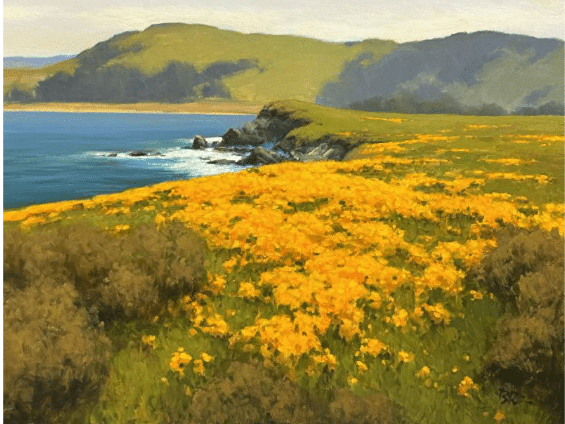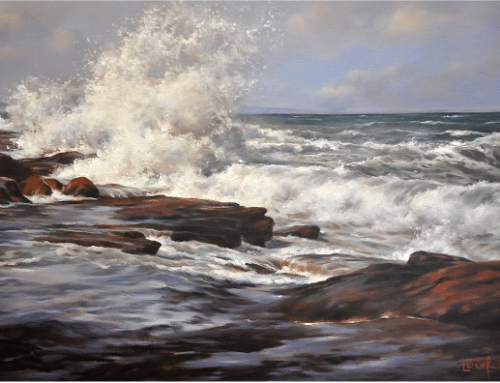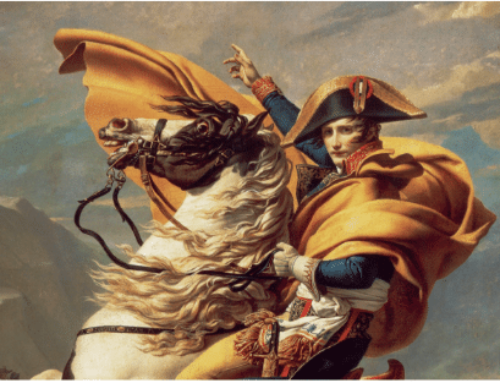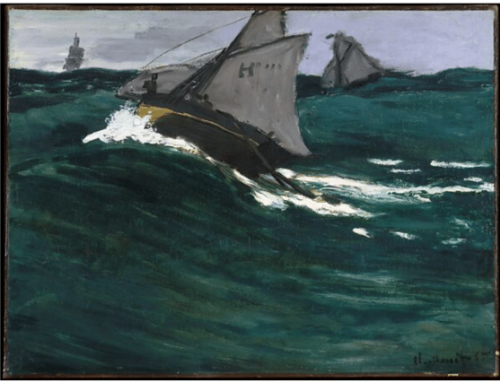California Impressionist Brian Blood, a resident of Pebble Beach, California, is one of California’s most successful plein air artists and a master of composition and design. There are two devices in particular at work in his paintings that any artist could benefit from being reminded of, leading lines and visual rhyme.
Blood began his professional life as a graphic artist and art director in Boston. Although his career was successful, he was frustrated personally and realized he really wanted to be a fine-art painter. A leap across the continent to California took him to the Academy of Art University in San Francisco for both undergraduate and graduate studies, where eventually he was hired as an instructor. His early training in graphic design stood him well, as his striking and visually satisfying paintings show.
Since the 1990s, Brian has been painting full time as well as conducting landscape painting classes at his alma mater. He also conducts ongoing workshops in his studio and surrounding areas of Pebble Beach.
Looking to get a better handle on composition?
Brian Blood’s paintings have an outstanding compositional integrity. As already mentioned, two important and related techniques working together in his paintings are directional, or leading lines and visual rhyme. We’re going to take a close look at these, because internalizing these two concepts alone can help you to create stronger paintings.
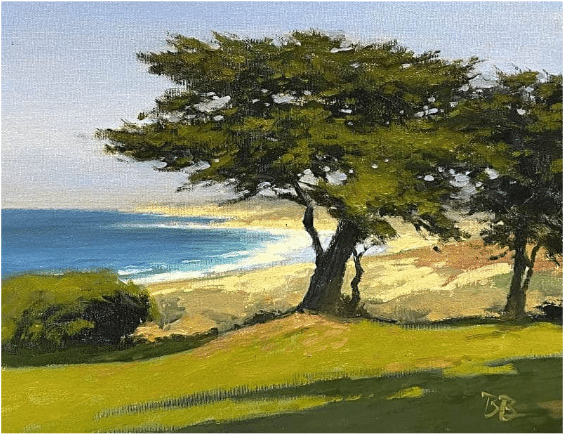
Brian Blood, View of Spanish Bay, 11 x 14 inches
Leading lines literally lead the viewer’s gaze through (and never outside of) a painting’s composition. In painting, all lines lead your eye somewhere, whether you’re conscious of it while working or not.
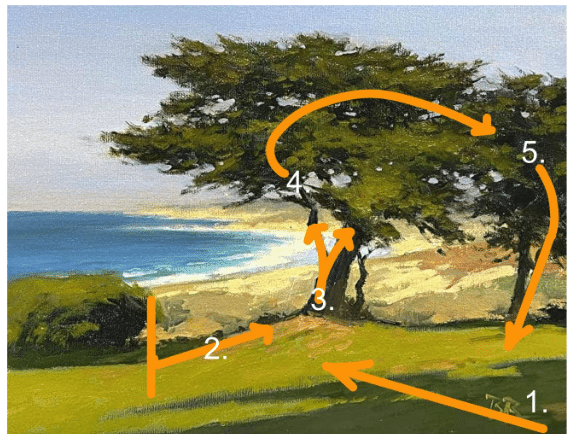
In View of Spanish Bay (above), Blood intentionally uses leading lines:
- To bring us into the painting (lower right-hand corner) and point us toward the left hand side.
- There, a mass (the bushes) stops us, while its shadow points us up into the middle ground (the trees).
- Then we find the tree trunks and branches carry us up to the top of the painting. Keeping the tree-tops a mass (rather than a line) prevents the eye from leaving.
- The right-leaning slope of the mass (treetops) lobs us first up then down in a gentle arc toward
- Where the right-side tree trunk leads us back down toward where we started in the lower right, where those corner lines (shadows in the grass) pick us up and direct us toward to the left again (1.) and round and round we go. In this example, it’s the darks – intentionally placed shadows – that keep us moving along.
Visual rhymes are shapes that mirror or echo each other. In the painting below (Last Light, Carmel), the directional lines (the path) act again to pick up the eye in a foreground corner and lead us into the pictorial space, but there are also some extra nice intricacies in the background on this one. As in the example above, the trees point us up then down again, this time from right to left, where another tree on the far left picks us up and points us back into the shadows in the foreground that scoop us back into the directional lines that initially started the cycle.
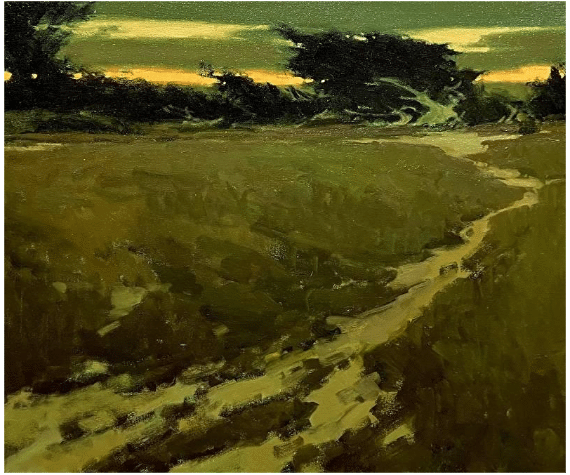
James Blood, Last Light, Carmel, 20″ x 24”
It’s the visual rhymes, though, the repeating shapes between the two left-pointing trees and the bleached tree trunk, that really delights the viewer – that and the way the tree trunk is like a mirror image of the pathway line.
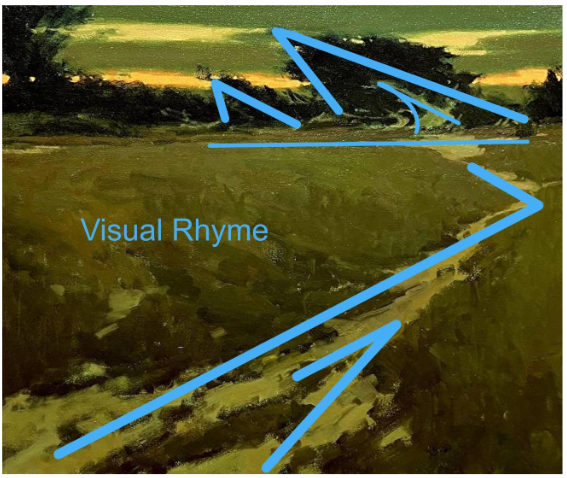
And in “Sunset at the Ghost Tree” (below), multiple visual rhymes create a lively lattice full of unified energy. In the diagram, the color-coded (green, orange, and blue) lines mark out just a few of the many shapes, angles, and edges that echo each other throughout this work. I’m sure with a close look you can identify many others.
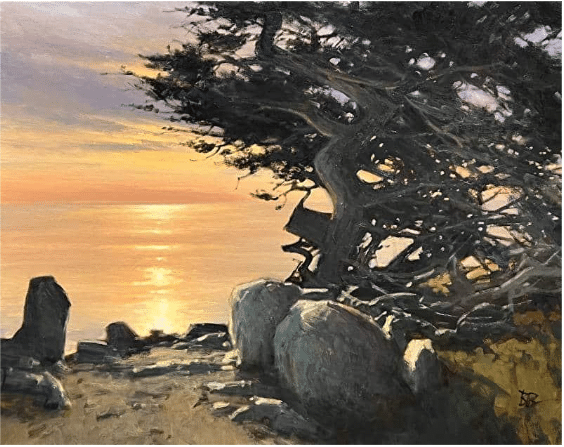
Sunset at the Ghost Tree
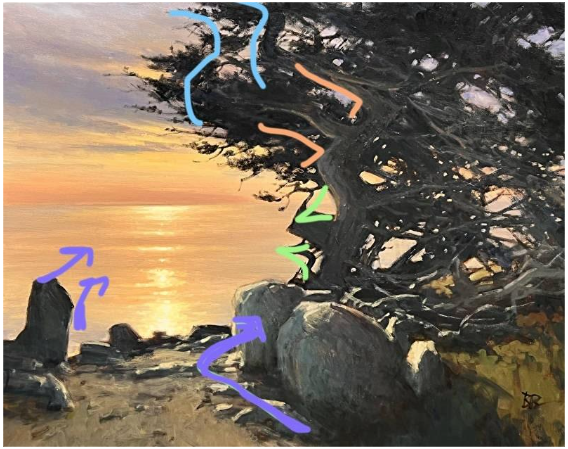
The composition in China Cove (below) is lively and original – we end up climbing, bouncing between masses of color till we reach the top, which then tilts diagonally to turn us back down toward the start, ricocheting right to left and right again, like a pinball machine.
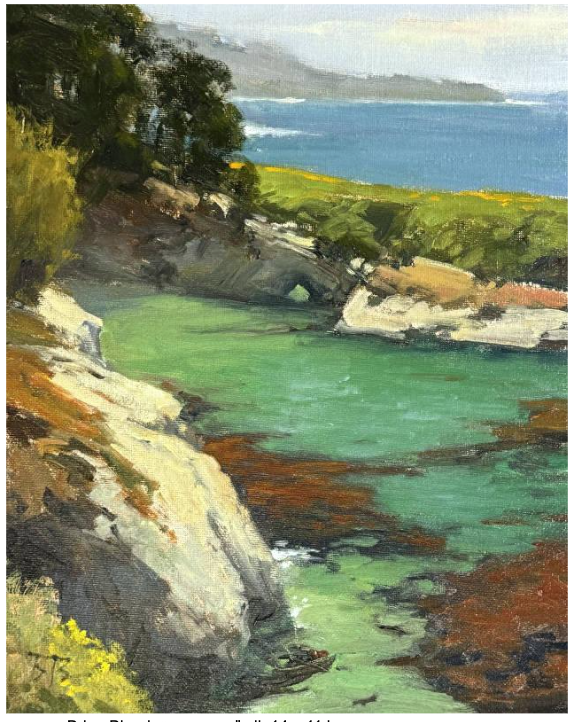
Brian Blood, “China Cove,” oil, 14 x 11 in.
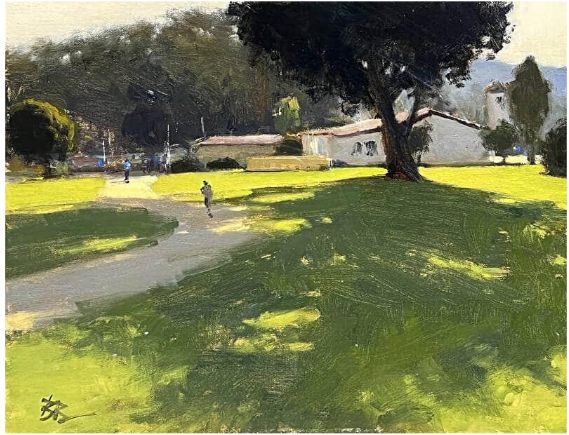
Brian Blood, El Estero Park, 11 x 14 inches
In this one (El Estero Park) the life of the painting lives in the visible brushstrokes (each of which is also “directional” – leading the eye along a small path of texture) and the luscious play between the bright light and shade colors. Note how the darker shadows all connect to each other in a continuous line.
Check out Brian Blood’s two instructional videos, Plein Air Painting Secrets and Landscape Painting Secrets, and paint along as Blood designs and executes his lively and vivid landscapes.

